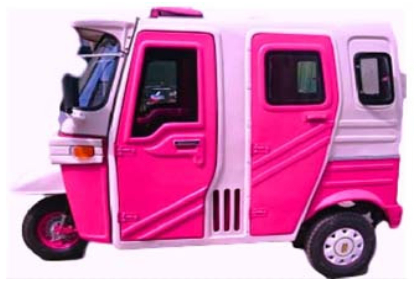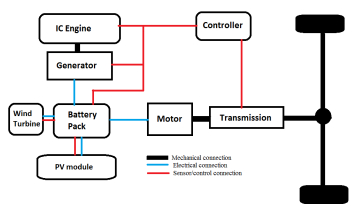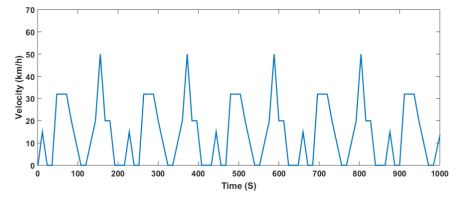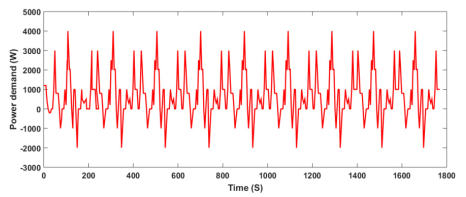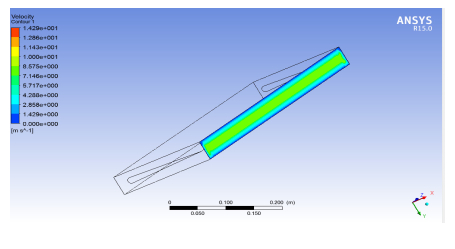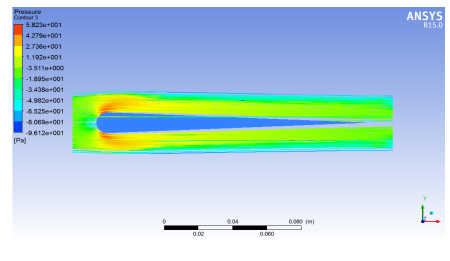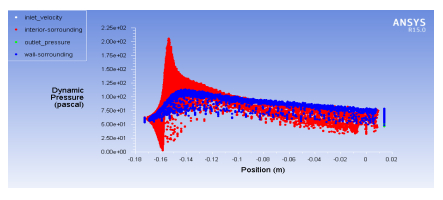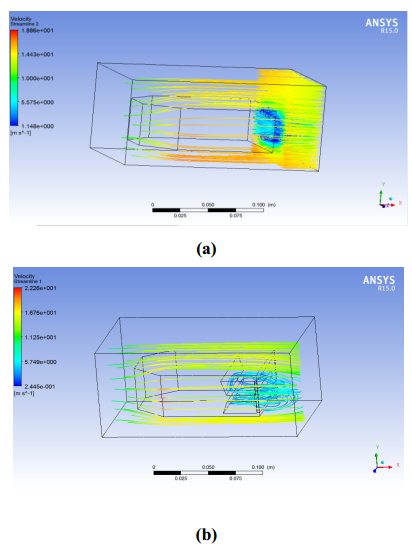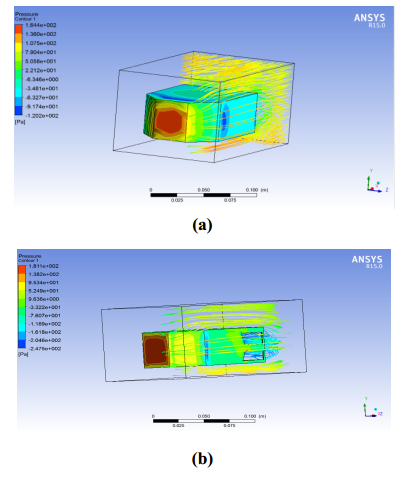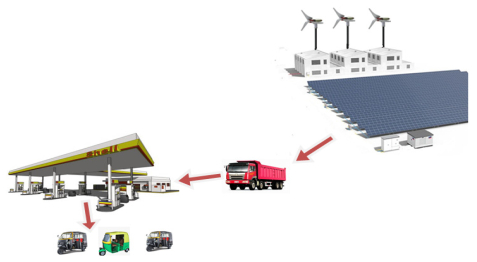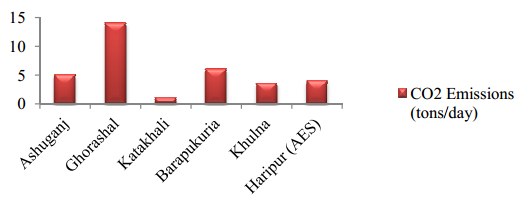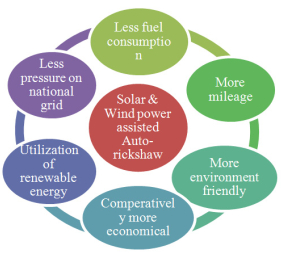Abbreviation: Pmot: Electric motor power, W; Pbatt: Battery power, W; Paug: Auxiliary device power, W; Ƞm: Electric motor efficiency; Ƞbatt: Battery efficiency; Ƞegs: Engine generator set efficiency; λd: Driver operation signal; ωm: Rotation speed of the electric motor, rpm; Pmot(max): Minimum electric motor power, W; Pmot(min): Minimum electric motor power, W; Ibatt: Battery pack current, A; ρ: Air density, kg/m3; A: Rotor swept area, m2; V: Velocity of air, m/s; Cp: Coefficient of performance; Ng: Efficiency of gearbox; Nb: Efficiency of bearing; Vout: Output voltage of converter, V; Iout: Output current of converter, A; Pout: Output power of converter, W; LCC: Life cycle cost of vehicle; Ck: Vehicle purchase cost; COMC: Corrective maintenance cost; COMP: Preventive maintenance cost; COMO: Operating state of vehicle cost; CD: Vehicle disposal cost; CDD: Cost of dismounting and removing engineering parts; CDR: Cost of recycling or safe disposal.
1. Introduction
With the economic growth of Bangladesh, Megacities of our country are experiencing huge traffic problems. The main reasons for this problem are a huge number of rickshaws, buses, and trucks. These vehicles consume a lot of fuels and emit a huge amount of various toxic and harmful particles and gases. So, it is necessary to make this vehicle environment-friendly; electrification or hybridization can be an effective solution. In hybridization, it can use both renewable and non-renewable energies simultaneously. Compared to other conventional vehicles plugged in hybrid vehicles consume less energy and produce much less greenhouse and toxic gases, because it roughly uses 60% less fuel than conventional vehicles [1,2,3]. However, a critical review of the literature regarding the several works done on auto-rickshaw in dissimilar fields is revealed in Table 1 and Figure 1 shows a typical auto-rickshaw of Bangladesh.
Table 1. Different previous work done on Auto-rickshaw.
| Year |
Purpose of study |
Major findings |
References |
| 2009 |
Worked on anti-angiogenic activities of exposure to environmental smoke solutions from auto-rickshaw. |
Found the effect of auto-rickshaw smoke on psychological angiogenesis. The authors showed computer-aided 3D images of the effect. |
[4] |
| 2010 |
Worked on solar assisted electric auto-rickshaw. |
Designed an auto-rickshaw which was solar assisted and validated the design by ADVISOR software. |
[5] |
| 2010 |
Analyzed on economic and social parameters of three-wheeler taxi service. |
Surveyed on 200 operators and 100 passengers, it analyzed the positive and negative aspects of these vehicles. |
[6] |
| 2010 |
Developed an environment-friendly electric autorickshaw using PV panel for Bangladesh. |
A 360W PV panel was attached with the auto-rickshaw and was able to supply 50% of the total vehicle power. The distance coverage by the rickshaw nearly doubled. |
[7] |
| 2010 |
Developed an environment-friendly electric autorickshaw using PV panel for Bangladesh. |
A 360W PV panel was attached with the auto-rickshaw and was able to supply 50% of the total vehicle power. The distance coverage by the rickshaw nearly doubled. |
[7] |
| 2012 |
Worked on a time-dependent plug-in hybrid electric vehicle. |
Found a compact vehicle with 10.4 kW useable batteries and it travels 62.5% to 75.7% on battery electricity, depending on charging scenario. |
[8] |
| 2012 |
Worked on the role of auto-rickshaw on the sustainable urban transport sector. |
Examined the role auto-rickshaw can play in the sustainable urban transport sector of India and found a very positive result. |
[9] |
| 2014 |
Evaluated the performance of micro-controller based solar power auto-rickshaw. |
Programmed a https://www.aimspress.com/aimspress-data/aimse/2018/2/PIC controller to control the DC cycle of the motor and was successful to reduce battery discharge time. |
[10] |
| 2014 |
Worked on hybrid energy assisted auto-rickshaw three wheeler. |
Used plug-in hybrid technology along with PV panel and validated the design by ADVISOR software. |
[11] |
| 2015 |
Developed a solar assisted rickshaw van. |
Modified a conventional rickshaw to a mass transportation solar-assisted electric rickshaw. |
[12] |
| 2016 |
Worked on the emission factors of auto-rickshaws using real-world driving cycle. |
Used Indian driving cycle and modified Indian driving cycle for predicting the emissions. In this study, real-world DCs were developed for motorcycles and auto-rickshaw. |
[13] |
| 2017 |
Designed a solar based micro-hybridized auto-rickshaw. |
Designed the vehicle by adding a PV panel with micro-hybrid technology and did a feasibility analysis for Bangladesh. |
[14] |
| 2015 |
Design and implemented a vehicle mountain wind turbine. |
The turbine could generate 200 W at a vehicle speed of 80 km/hr. The wind turbine was mounted on the rooftop of the vehicle. |
[15] |
From Table 1, it is seen that several works have been done on Auto-rickshaw using solar energy, but the uses of wind energy is not that familiar in auto-rickshaw like solar energy. Only one [15] paper is found where wind energy is used as a power source in the vehicle. Here, the wind turbine is situated on the roof of the vehicle, though no discussion about additional drag is found in that paper. Solar and wind energy were never used in auto-rickshaw simultaneously. Many famous and renowned researchers have conducted several experiments and significant improvement in fuel consumption and emissions of auto-rickshaw. In this paper, PV panel and wind Turbine is attached with a plugged-in hybrid Auto-rickshaw to reduce the pressure on fuel and national grid electricity. A new vehicle design is proposed here to reduce the additional drag created by the turbine; here the wind turbine is positioned inside the vehicle. CFD analysis of the turbine blade is done considering turbine and blade properties and the net drag and lift forces are calculated. Since plug-in hybrid technology is used, so, if the vehicle only runs on electricity produced by Turbine, PV panel, and national grid, then emissions would be zero.
2. Powertrain of the vehicle
The vehicle powertrain topology is investigated in this paper, as appeared in Figure 2. The vehicle is pushed by an electric motor (EM) system. Engine generator set (EGS) and Lithium-ion battery pack are used to supply electric power to the motor. The motor can run on both thermal energy and electric energy. Charges from PV panel and wind turbine are stored in the battery and thermal energy of the engine is converted to electrical energy through a generator and both are supplied to the motor [16].
The power adjust relationship can be portrayed by the following Eq 1 to Eq 3. The EM yield control is resolved by the driver operation signals [17,18]. Here, driver is essentially demonstrated as a PID control as indicated by the objective velocity v* and real v feedback.
|
Pmot(t)Ƞm+Paux(t)=Pbat(t)Ƞbatt+Pges.
|
(1)
|
|
Pmot(t)={λ∗d(t).Pmot(max)(ωm(t),t)λ∗d(t)>0λ∗d(t).Pmot(min)(ωm(t),t)λ∗d(t)>0
|
(2)
|
When making the EGS and battery pack cooperate, the energy administration technique will settle on the choices about power allotment between the EGS and the battery.
3. Materials and method
3.1. Solar PV panel specification
In this section, the specifications of the PV panel are stated. The values and data are taken from real-world data. The specifications of PV panel are stated in Table 2.
Table 2. Solar PV panel specifications.
| Parameters |
Dimensions |
| Solar panel |
2 pieces |
| Rated output |
12V-180W (Total) |
| Dimensions |
1.5 × 0.8 × 0.05 meters |
| No. of cells per panel |
N/A (variable) |
| Efficiency |
18% (approximately) |
| Battery |
24 volts, 4 pieces |
| No. of solar cells |
60 monocrystalline cells |
3.2. Wind turbine specification
Wind energy is available in the form of kinetic energy, which can be converted to another form by mechanical conversion; hence the conversion is the production of electrical energy from mechanical energy. The full specification of the wind turbine is stated in the following Table 3.
Table 3. Wind turbine specifications.
| Generator |
Blades |
Turbine |
| Model: HN1010B |
Length: 0.75 m |
Swept area: 1 m |
| Input: 180 V/5A |
Width: 0.18 m |
Length: 0.45 m |
| RPM: 4000 |
Weight: 1 kg (each) |
Weight: 6 kg(without generator) |
| Mechanical O/p: 2hp |
Total blades: 3 |
Type: HAWT |
| Type: PMDC |
Orientation: Central |
Tail: No |
| Efficiency: 60.35% |
|
|
3.3. Drive cycle
Drive cycle is the most important parameter of a hybrid vehicle drive train. Normally an auto-rickshaw goes around 100–150 km per day. The drive cycle has been conducted by following the Mild Asian Drive Cycle and using conventional auto-rickshaw properties. Here, distance travel and idle time are being assumed. The normal drive cycle speed is taken 25 km/h, which compares to the internal city activity circumstance.
3.4. Wind turbine blade simulation
The simulation is done by ANSYS CFD. The blades normally have simple aerofoil look. For these simulations properties of Table 3 are used and air velocity is taken 8 m/s and the velocity of the surfaces of the blade is taken zero. Vehicle speed is taken 25 km/h for this simulation.
3.5. Positioning of turbine and simulation
At the time of running the vehicle, a wind speed with 8 m/s is following around the vehicle (taking the vehicle is at its average speed).This wind will create a drag in the opposite direction of the propulsion of the vehicle. If the air stream following around the vehicle is somehow allowed to enter inside and let it flow out through the rear side, then it must be possible to generate power using these streams. The vehicle deflects the wind at the two sides of it by stagnation at the front; to overcome aerodynamic resistant this energy had been lost from the vehicle. If a wind turbine is placed in the space through which wind get inside into the vehicle, it will produce power. Symmetrical positioning of the turbine will not impose or create any additional drag on the vehicle [19]. For this, the vehicle dimensions need to be slightly increased for positioning the turbine.
4. Results and discussions
4.1. PV module power calculations
Let, total weight of vehicle is 500 kg (including all components and passengers):
|
Totalpower=totalvehicleweight×gravity×speed×gradientofvelocity
|
(4)
|
Using Eq 4 the required power to run the vehicle is: Total power = 500 × 9.8 × 35 kmph × 0.03 W = 1426 W. Here, the induction motor is used of 12V-1 kW rated. Current flow = P/V = 1500/36 ≈ 42 Ah. Load current per day = current flow × running time per day × 1.2 = 42 × 5 hours × 1.2 ≈ 250 Ah/day. Capacity of the battery = load current per day × 1.2 = 300 Ah/day (overall 25% losses). Power required to run the motor = battery capacity × voltage difference = 250 × 36 ≈ 9000 Wh/day. No. of batteries = 1430/378 = 3.78 pieces ≈ 4 pieces. Here, capacity of solar panel 12V and 180 W. Current flow = (180/12)/4 = 3.75 A to each battery. Charging time = 250/3.75 = 66.67 hrs. Now, the battery will be charged by one solar panel within 8 hrs daylight = (100 × 8)/66.67 = 12%. If two solar panels are used then battery will be charged by 24%.
4.2. Wind turbine power calculations
The output of wind turbine is expressed as:
|
p=12×ρ×A×V3×Cp×Ng×Nb=12×1.16kg/m3×1.78m2×(8m/s)3×0.45×0.604×0.9=128.45W
|
(5)
|
The capacity of the wind turbine is 12 V and 128 W. Current flow to each battery = (128.45/12)/4 = 2.67 A. So, charging time = 250/2.67 = 93.63 hrs. If the auto-rickshaw runs for five hours per day then the battery will be charged = (100 × 5)/93.63 = 5.34% by the wind turbine. The PV modules and wind turbine together will provide (24%
+ 5.34%) = 29.34% of total power to run the vehicle.
For wind turbine four cases can be considered, which are depicted in Table 4. For case 1, 2 and 3 the power is insufficient to mention as either air speed is too slow or the vehicle is stopped. Only in case 4 both vehicle and air are in the functioning mood.
Table 4. Vehicle speed and power.
| Cases |
Vehicle |
Wind speed |
Power status |
Mode |
| Case 1 |
Stopped |
≈0 |
≈0 (negligible power) |
Inactive |
| Case 2 |
Stopped |
≠ 0 |
P (negligible power) |
Inactive |
| Case 3 |
Moving |
≈0 |
P (negligible power) |
Inactive |
| Case 4 |
Moving |
≠ 0 |
Maximum power |
Active |
4.3. Drive cycle
In Figure 3, the vehicle drive cycle is shown. The average speed of the vehicle is taken about 25 km/hr.
In Figure 4, the drive power demand is computed at every moment for the whole length of the drive cycle. The drive power demand shows the approximate amount of power necessary to run the vehicle according to the drive cycle.
4.4. Blade simulation results
The design was first done in SolidWorks, and then it was imported to ANSYS CFD. For CFD analysis meshing is very important for obtaining accurate results. For better result element size near the aerofoil was selected 0.001 m. The boundary faces were selected to be sized 0.01 m. Smoothing was selected to be medium and other volumes of the system was selected to be fine. Triangular mesh was applied for the analysis. K-ε (k-epsilon) turbulence model was selected for the simulation. It is a two-equation model which gives a general description of turbulence by means of two transport equations (PDEs). Figure 5 shows the velocity distribution at the outlet. At the middle portion velocity is about 1.000e + 0.001 m/s and at the edges of the outlet surrounding velocity is about 2.858e + 0.000 m/s and at the very edges its approximately 0 m/s. Figure 6 shows the pressure distribution in the inlet from where the air enters or passes on the blade. At the middle pressure is about 1.192e + 0.001 pa and at the edges, it's about –3.00e + 0.000 pa. Due to the curvature of the blade inlet, the direction of the air is changed. Highest pressure on the blade is around 58 pa. Figure 7 shows the dynamic pressure vs. position XY plot. From this graph, dynamic pressure profile of the blade can be understood. It is the kinetic energy per unit volume of the fluid particle. From the simulation, the net force in the X direction is found 2.66324 N and net force in the Y direction is –0.005535002 N. These two forces will rotate the turbine and which is satisfactory to keep it moving. For increasing the power output micro tab [20] can be implemented on the trailing edge or sinusoidal leading edge and dimpled surface [21] can be integrated. These two are defined as future research.
4.5. Simulations of the proposed positioning of the turbine
The simulation is done by ANSYS CFX. The conventional vehicle model and proposed vehicle model are simulated. Using simulation results the theory is validated. The mesh size was taken 0.005 m. For the surrounding free slip wall condition and for the vehicle body no-slip wall condition was chosen.
From Figure 8, it is seen that the vortexes on the proposed system are reduced and an additional thrust can be obtained by the streamlines which are passing through the vehicle. So, reduction of drag is possible through the proposed design. If a turbine is placed, power can be obtained by extracting kinetic energy from the flow.
From Figure 9, it is seen that in the front, pressure in the proposed system is similar to the conventional system. This indicates that no additional drag is created. From Figure 8 and Figure 9, it can be concluded that due to the positioning of the turbine no additional drag will be imposed on the vehicle, moreover, the addition of turbine will produce some power which will provide some benefit for the vehicle.
5. Converter for storage
The mechanical input of the system is not constant; it depends on the wind and the vehicle speed. The vehicle speed varies a lot due to traffic and surrounding. As a result, power generation will also fluctuate. For all these reasons, a small low cost and lightweight converter are necessary to regulate the voltage. A buck-boost DC-DC converter can be a solution to this. Table 5 shows DC-DC converter topologies for this type of small-scale operations [15].
Table 5. Several DC-DC converter topologies.
|
Power range 1 |
Power range 2 |
Power range 3 |
Power range 4 |
| Converter topology |
0–100 W & < 5A |
0–100 W & > 5A |
200–400W |
400–1200W |
| Single switch flyback |
√ |
|
|
|
| Double switch flyback |
√ |
|
|
|
| Single switch forward |
√ |
√ |
|
|
| Double switch forward |
√ |
√ |
√ |
|
| Half-bridge |
|
|
√ |
√ |
| Full bridge |
|
|
|
√ |
| Since, the power is varying from 0–100 W, so it would be convenient to use a converter of Vout of 12 V, Iout of 5 A and Pout of 60 W. |
6. Proposed recharging infrastructure
In addition, the recharging infrastructure is considered in detail. Regardless the rickshaw will use solar panel and turbine or whether a plug-in hybrid technology or battery swap model will be implemented, the battery recharge infrastructure should be examined. This is due to the reason that, in Bangladesh grid electricity is not an option in some places. Electric trucks are used to transport the batteries to and from the customer for minimizing the pollution. In this scenario, the rickshaw driver would go to a station and swap his discharged batteries with the fully charged batteries. The fully charged batteries will be brought from a recharging station by all-electric trucks as shown in Figure 10 and in Table 6, optimization of recharging station components are evaluated.
Table 6. Optimization of recharging Station Components [22,23,24].
|
PV |
Wind |
Gen |
| Size (kW) |
540 |
394 |
350 |
| Output (MWh/yr) |
1159 |
1031 |
1053 |
| Excess (% MWh) |
|
2.7489 |
|
| % Renewable |
|
67.6 |
|
There are several goals for the design and implementation of recharging infrastructure.
● The battery swapping process should appear to a driver as quick as filling the vehicle tank with gas and should be effective and efficient.
● The fraction of the renewable energy sources used to charge the battery should be maximized while reducing the time for financial investment.
● To eliminate the additional stress on the grid electricity. In Bangladesh, there are a lot of regions where grid electricity is not available. Moreover; while producing electricity thermal power plants produce a lot of emissions.
7. Feasibility analysis
Feasibility of the proposed system is analyzed by taking the cost of the vehicle and its environmental impact into consideration.
7.1. Installation cost and payback period
In this section, the installation cost of the proposed system over a conventional engine operated vehicle is analyzed. Table 7 shows the cost assumptions for installing Wind-PV combined plugged-in system.
Table 7. Cost assumptions for installing the system.
| Component |
Cost |
| Plugged-in hybrid system |
Nearly same as normal gearing arrangement of conventional ICE operated auto-rickshaw. |
| PV Panel, 12 V-180 W |
7000 BDT (nearly 84.30 USD) |
| Battery, 36 V |
8000 BDT (nearly 96.34 USD) |
| Induction Motor, 12 V-1 kW |
7000 BDT (nearly 84.30 USD) |
| Wind Turbine system |
30000 BDT (nearly 360 USD) |
Here, as plugged-in system costs nearly the same of conventional gearing arrangement of ICE operated auto-rickshaw, so this cost can be omitted for the simplicity of cost estimation of new component installation.
So, installation cost of the new components : 1–2 PV Panel(s) + 4 Batteries + 1 Induction Motor + Wind turbine system = 76000–83000 BDT (991–995 USD approximately).Thus, the maximum installation cost of the proposed vehicle is 83000 BDT (nearly 1000 USD).
The formula of payback period is:
|
PaybackPeriod={(p−n)/p}+ny={1+ny−(n/p)}(unit:yrs)
|
(6)
|
Here, ny = The number of years after the initial investment at which the last negative value of cumulative cash flow occurs; n = The value of cumulative cash flow at which the last negative value of cumulative cash flow occurs; p = The value of cash flow at which the first positive value of cumulative cash flow occurs.
In this proposed vehicle, Total power calculated to run the vehicle = 1426 W. Power required for running the motor 9 kWh/day = 9 unit. In Bangladesh, commercial electric line cost 25 BDT/unit [Source-Dhaka Electric Supply Company Limited].
Requires = 9000/5 × 36 × 4 = 12.5 hours to charge the full battery.
Cost to charge the battery = 12.5×25 = 312.5 BDT/day.
Table 8 shows the payback period for the system-From the analysis above and from Table 7 and 8, it can be concluded that case-2 is more favorable.
Table 8. Determination of payback period for new installing cost.
| Parameters |
Case-1 |
Case-2 |
| PV Panels |
1 |
2 |
| Batteries |
4 |
4 |
| Induction Motor |
1 |
1 |
| Wind Turbine system |
1 |
1 |
| Power Supply from PV Module (per day) |
14–17% of 9 kW |
25–30% of 9 kW |
| Cost Reduction (per day) |
27–32 BDT (around 0.35 USD) |
60–67 BDT (around 0.8 USD) |
| Payback Period (yr.) |
Around 6.5–7 yrs. Maximum |
Around 3–3.5 yrs. maximum |
Figure 11 shows how payback years vary with the variation of cost. Here an estimated price of the PV panel and the turbine have been taken, which is approximately 83000 BDT. But this price may vary in different places. That is why; this graph is presented which shows the variation of payback year with respect to the variation of cost of the system. A typical auto-rickshaw running age is between 18–20 years without much fluctuation in its performance [25]. So, the obtained payback time is satisfactory.
7.2. Life cycle cost estimation
In an attempt to improve the design of products, cost, and reliability; the life cycle cost estimation is a very effective method. Prediction of life cycle cost estimation makes use of artificial and statistical neural method in conceptual product design [26]. It is used in optimizing the design concept in early life cycle phase of a vehicle. It is normally done when the manufacturing of the product is in operation [26,27,28,29,30,31]. Here, the lifecycle cost estimation is considered taking 20 years as a vehicle lifetime. Table 9 shows the overall life cycle cost estimation.
|
LCC=Ck+COMC+COMP+COMO+CD
|
(7)
|
Table 9. Life cycle cost estimation.
| Division |
Sub-division |
Cost (BDT) |
| Ck |
Auto rickshaw Turbine PV Cell Batteries |
120,000 30,000 14,000 30,000 |
| COM |
Turbine PV Panel Labor Workshop For the maintenance of different parts of auto rickshaw |
15,000 2000 2000 5000 20,000 |
| COMO |
Price per liter of fuel |
Not considered (only using renewable energy) |
| Battery price |
80,000 (replacement) |
| Tire price |
10,000 |
| Price of annual liability insurance |
Not considered |
| Accident insurance |
40,000 |
| Technical inspection and exhaust emission measurement |
10,000 |
| CD |
Disposal cost |
Not considered |
|
TOTAL |
37, 8000 |
Maintenance cost:
The maintenance costs are generally material cost, labor cost, and workshop equipment cost [18,19].
For calculating COMO the following data should be considered:
● Price per liter of fuel.
● Battery price.
● Tire price.
● Price of annual liability insurance.
● Accident insurance.
● Technical inspection and exhaust emission measurement.
Disposal cost:
The disposal cost may be plus or minus value depending on the disposal method. The plus value is obtained if the raw materials are handed to a refuse collection. Minus value is obtained if the vehicle is disposed of by other company [26]. For these reasons, the disposal cost is not considered.
Here, per liter fuel cost is not considered, because it is very difficult to predict lifetime fuel consumption. That is why the lifetime cost estimation is conducted assuming the vehicle would run only on green energy.
7.3. Environmental impact
In Bangladesh, most of the power plants are thermal power plants. Those thermal power plants are a key source of CO2 gas emission, resulting in the enhanced greenhouse effect. A 500 MW thermal power plant can produce up to 1 kg/kWh greenhouse gases [32,33]. Figure 12 shows CO2 emission rates of some major power plants of Bangladesh.
The proposed vehicle will save approximately 29.34% of total power consumption from the national grid, if we want to run the vehicle totally by national grid electricity. Here, for making the calculation easy taking Ghorashal power plant under consideration. Daily CO2 Emission of the power plant = 14 tons and Maximum electricity supplied by the plant = 35000 kWh.
|
CO2emissionperkWhperday=DailyCO2emissionCapacityofthePlantperDayinkWhr=4×10−4tons
|
If the proposed vehicle is implemented in a big city, then let, the number of auto-rickshaws in the city is around 5000 (estimated).From previous calculations, Energy savings per day per vehicle = 2.641 kWh. Total energy savings per day = (5000 × 2.641) = 13,205 kWh. Amount of CO2 emissions to produce 13,205 kWh electricity = (13205 × 4 × 10–4) = 5.282 tons.
So, reduction of CO2 emission by the proposed system = (5.282/14) × 100 = 37.73%.
So, it can be concluded that, if the proposed vehicle is implemented in a city of 5000 auto-rickshaw the total CO2 emissions of the city can be reduced by 37.73% approximately.
8. Advantages of the proposed vehicle
The proposed vehicle has several advantages compared to conventional three-wheeler. The advantages of the proposed vehicle are shown in Figure 13.
9. Conclusions
A convenient system for energy harvesting with the vehicle is proposed in this paper called solar and wind energy assisted Auto-Rickshaw. The parameters, properties, and specifications are discussed briefly in this paper. The vehicle is very much cost effective and has a minimum maintenance cost. Moreover, power plants produce a huge amount of greenhouse and toxic gases while producing electricity. If this vehicle is implemented on a large scale then it would reduce a vast amount of emission. In fine, the proposed vehicle is more synchronized than conventional vehicles and the proposed methodology can be implemented in different other vehicles. Further research on the proposed vehicle model is necessary considering weight and positioning of the turbine.
Acknowledgements
The authors would like to thank all the teachers of Department of Mechanical Engineering of Rajshahi University of Engineering & Technology for their helps and guidelines. The authors would also like to acknowledge all the respected stuffs of Computer Lab of Mechanical Engineering for their helps in conducting all the simulations.
Conflicts of interest
All authors declare no conflicts of interest in this paper.









 DownLoad:
DownLoad: 